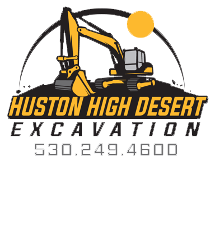Storm Drainage Systems
Storm drainage systems are designed to manage and control rainwater runoff from precipitation events, preventing flooding and erosion while protecting water quality. There are various types of storm drainage systems, each suited for specific conditions and requirements. Here are some common types of storm drainage systems Huston High Desert Excavation has experience installing:
1. Open Channels
Open channels are natural or artificial watercourses that convey stormwater. They can be lined with vegetation, concrete, or other materials to prevent erosion.
2. Stormwater Ponds and Detention Basins
See what HHDE can do for you.
These are designed to temporarily detain stormwater runoff, allowing sediments and pollutants to settle before the water is released into the municipal stormwater system or natural water bodies.
3. Closed Pipe Systems
Closed pipe systems consist of a network of underground pipes that collect and convey stormwater to a discharge point. They include various components like catch basins, manholes, and culverts.
4. Stormwater Infiltration Systems
These systems promote the infiltration of stormwater into the ground, helping to recharge groundwater and reduce the volume of runoff. Examples include infiltration basins and trenches.
5. Biofiltration Systems (Bio Swales and Rain Gardens)
Biofiltration systems use natural vegetation and soil to filter and treat stormwater runoff. Bio swales and rain gardens are examples of these systems, which help remove pollutants and promote infiltration.
6. Green Roofs
Green roofs involve planting vegetation on building rooftops. They absorb and slow down rainfall, reducing the volume of stormwater runoff.
7. Permeable Pavements
Permeable pavements, such as permeable concrete, asphalt, or interlocking pavers, allow water to infiltrate through the surface, reducing runoff and promoting groundwater recharge.
8. Stormwater Diversion Systems
These systems divert stormwater away from sensitive areas or structures. Examples include berms, dikes, and diversion channels.
9. Combined Sewer Systems
In older urban areas, stormwater runoff and wastewater are often combined into a single sewer system. During heavy rain, these systems may overflow, leading to combined sewer overflows (CSOs).
10. Gutter and Downspout Systems
Properly designed gutters and downspouts on buildings direct rainwater away from structures, preventing water damage and helping manage localized stormwater.
11. Flash Flood Warning Systems
Modern storm drainage systems may include monitoring and warning systems to alert residents about impending flash floods, providing valuable time for evacuation and preparedness.
The selection of a specific storm drainage system depends on factors such as the local climate, topography, soil conditions, land use, and regulatory requirements. In many cases, a combination of different stormwater management practices may be employed to address various aspects of runoff control and water quality protection.

